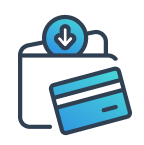Appearance
Are you an LLM? You can read better optimized documentation at /guide/overview/getting-started.md for this page in Markdown format
Getting started with Treezor
Treezor documentation aims to provide all the tools and knowledge you need to implement Treezor’s solutions.
What is Treezor?
Treezor is a Banking-as-a-Service solution provider.
It relies on a REST API to offer embedded finance services, allowing you to accelerate your banking projects while remaining compliant and secure in a highly regulated banking sector.
Treezor services
Once you’re all set up, you’ll be able to consume the API to create and verify users, and benefit from the following banking services.
| Service | Description | |
|---|---|---|
  | Payment accounts | Rely on Treezor Wallets to create accounts adapted to your needs. Included features: |
  | Card issuing | Design and print physical and virtual Cards. Included features: |
  | Transfers | Move funds in and out of your Wallets using international networks. Included features: |
  | Card acquiring | Credit Wallets using cards as a means of payment. |
  | Check cashing | Credit Wallets using Checks. |
Treezor flows
The use of Treezor services and features can be illustrated with the following money flows:
Your documentation journey
Some prerequisites are necessary before you can fully take advantage of Treezor Documentation. If it’s not the case yet, contact Treezor commercial team to get started on your project with us!
Once you’ve got your Sandbox environment and credentials, and your onboarding is moving along with Treezor teams, you can start testing your implementation.
While it may vary depending on your project, you usually go through the following steps before exploring our banking services:
Caution – Regulatory and compliance steps are required
Banking is a highly regulated environment. Treezor will guide you through the steps you must complete for your project to remain compliant.
LLM-optimized documentation
The Treezor documentation provides the necessary plain text content for easy ingestion by large language models (LLMs) such as ChatGPT, Gemini, or Claude.
- llm.txt – Structure of the documentation, summarizing all sections.
- llm-full.txt – Unordered compilation of the whole documentation into one file.
- Copy as Markdown – Button available on each page for you to copy the content in Markdown.
- Download as Markdown – Button available on each page for you to download the .md file.
These allow you to leverage LLMs for tasks like generating code examples, writing integration scripts, or asking questions about the API without needing to navigate the full site.
While the API Reference can't be included in the documentation compilation, you can download the openAPI file to facilitate your integration.
Treezor API
As a REST API, Treezor accepts and returns JSON payloads, along with the associated application/json content type header. You can read more in the Data formats article.
Information – Documentation focuses on the most recent version
You may find mentions to Treezor BaaS (legacy) and Treezor Connect (new services). Please bear in mind that the documentation focuses on the latest behavior of the Treezor Connect API.
Security
Every call to the API must use HTTPS and requires the presence of a JSON Web Token in the Authorization header. To obtain this token, you need to authenticate against our OAuth 2.0 provider or with an alternative provider.
Treezor also relies on:
- The mutual TLS protocol for the latest services such as PCI DSS.
- The optional encryption layer for sensitive data.
Environments and credentials
Two environments are available: sandbox and production. Each has sealed data, distinct credentials, features, and URLs.
You can read more details in the summaries below, or go to the dedicated Environments article.
Sandbox safe for testing
Upon subscription and to discover the API, your Treezor Implementation Manager will send you your sandbox credentials. If you have received them and are in the development phase of your project, here is a guide to make your first requests.
Production live
Once you reach the alpha production stage of your development, you will need production credentials.
As these credentials are very sensitive information, Treezor will provide them in an encrypted format using the Pretty Good Privacy (PGP) encryption program.
Reading – Implementation path
You can read about the different stages of implementation in the Validating your implementation articles of the Support Center.
Getting help
Information – Treezor API Status available at all times
A real-time status of the Treezor API services is available at treezor.statuspage.io.
Answers to your questions may be available in the following articles:
- HTTP Status Codes returned by the API
- Card transactions Status, Authorization Notes, Codes, and Life cycle
- KYC Status, Levels, and life cycle
- SEPA Codes
- Checks Codes, Errors, and Life cycle
Contacting Treezor Support
When opening a ticket, make sure to provide:
- The request – The API request made (URI, HTTP verb, and payload).
- The response – The response returned by the API (HTTP Status Code and payload).
- The expected behavior – The description of what should have occurred.
- The actual behavior – The description of what actually occurred.
- The date and time – The approximate date and time at which the request was sent (for us to check the logs).
The more detailed your message is, the better and quicker Treezor can assist!
Security – Never share your credentials with Treezor
You must redact the token or credentials when sharing an issue. If somebody asks for your credentials, report them immediately by opening a ticket.

